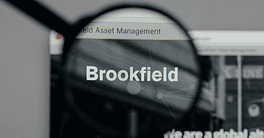BECOMING LIQUID
By Denise Bedell
Investor interest in trade receivables securitization is growing, and companies are taking note as they search for alternative liquidity sources.
 |
|
Atallah, Deutsche Bank: Volatile credit markets are forcing companies to use new liquidity tools |
Trade receivables securitization has long been used as an alternative form of liquidity. Once a primary financing tool, many large companies had a trade receivables securitization program in place alongside other working capital solutions. But when the crisis hit, the word securitization became anathema to investors, many banks stopped offering securitized receivables programs and many companies either mothballed or completely closed their programs. It started to regain momentum post-crisis—as investors differentiated between trade receivables and other securitized asset classes.
Global credit conditions and tightening traditional trade finance capacity are now driving renewed interest. “Volatility and uncertainty in credit markets force clients to secure alternative more stable, cost-effective sources of liquidity and credit,” says Stephen Atallah, Americas head of structured trade and export finance, Deutsche Bank.
For non-investment-grade companies, just as asset-based loans have grown dramatically, so too has the use of trade receivables securitization. Adrian Katz, chief executive officer of receivables securitization advisory and structuring firm Finacity, says that while absolute interest rates are low, unsecured borrowing rates for lower rated companies are at very wide spreads. “So if a company is below investment grade and they choose to provide some collateral they get much better pricing, and that arbitrage is attractive for CFOs,” he notes. In addition, one driver in the US is the accounting treatment. With the right structuring it is still possible to get US GAAP true sale treatment.
Investor Interest Grows
Trade is now seen as a liquid asset class in the minds of the investor community, and deals are being regularly placed in the capital markets, according to Paul Johnson, senior vice president, trade finance, at Bank of America Merrill Lynch. He notes: “ In the past there was not a lot of interest in trade paper. Now there is a ready secondary market and active interest by hedge funds, private equity, insurers, and so on.”
Some critics point out that pre-crisis there was a certain amount of elasticity in some contracts that made use of ratings criteria flexibility, which could have affected the strength of certain programs, but in general trade receivables securitization programs—those that remained in use—came through the crisis in good form. In addition, some of the criteria applied to such programs have become tighter, making the product even safer as an investment vehicle.
Recent deals highlight investor interest. For example, US food production company Bunge—which holds a BBB- rating from Standard & Poor’s—in June launched a $700 million trade receivables securitization program that is being funded through four bank-sponsored commercial paper conduits.
According to Katz, one of the largest audiences now is in the conduit space. “In the ABCP conduit market, they realized they should have shorter duration assets, like trade receivables, funded by short-duration CP.”
Hapag Lloyd, the German shipping company, in May announced a $100 million facility funded through the CP conduit of German bank Nord/LB. And in a transaction that closed in August, cement company Cemex of Mexico launched a 2.5 billion pesos ($200 million) trade receivables securitization facility that was rated AAA by S&P.;




